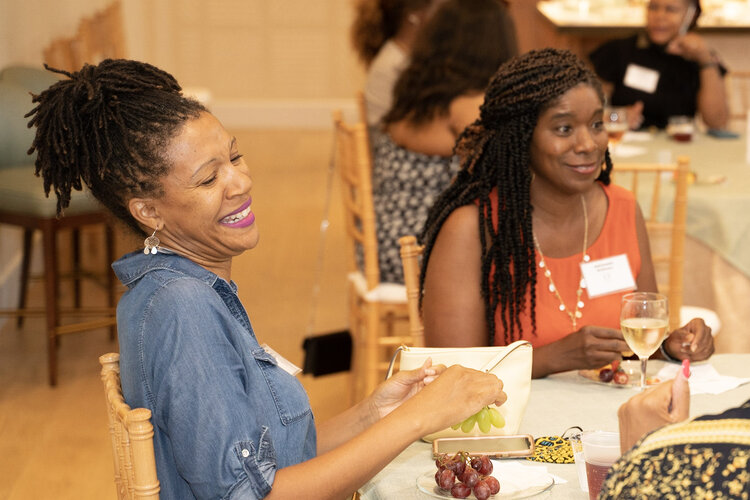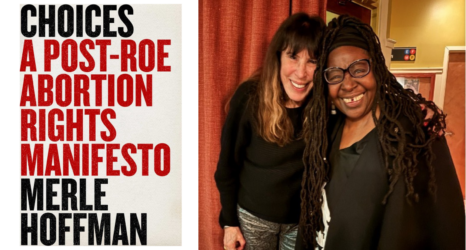Collective giving is democratizing and diversifying not only who is giving funding, but who is receiving it.

During the first part of this pandemic, when many were getting by on less, Americans came together to support one another with unprecedented acts of generosity and solidarity, including increasing donations to nonprofit organizations. Giving in 2020 increased by an estimated 5.2 percent, compared to 2019, and we expect the trend to continue when the final tally comes in for 2021. This is especially good news, as it reverses a decades-long decline in giving by ‘everyday’ donors, where less than half of U.S. households donated to charity in 2018—down from two-thirds in 2000.
While much of 2020’s increase came from larger-scale gifts from wealthier donors, small to medium-size donors increased their giving during the pandemic, as well. In particular, individuals who participated in collective giving —joining together in coordinated philanthropy action—saw a particular increase during the pandemic. Through giving circles—groups of people who pool donations and decide together where to allocate their money—and collective giving moments like Giving Tuesday, communal giving is growing in strength and popularity, particularly in the wake of COVID-19. This is good news for the diversity and democracy of American charitable giving and the wide array of causes and nonprofits that everyday givers support.
This year on Giving Tuesday, 35 million generous people came together to give $2.7 billion in a 24-hour period—just in the United States, a 9 percent increase in dollars and 6 percent increase in participation over last year—in addition to the countless acts of giving, volunteering and kindness shared around the world. We saw amazing displays of generosity from people all over the world who gave time, voice, kindness, goods or money—not in spite of the challenges of the pandemic, but because of it.
A Horizon Media study showed that 52 percent of people who participate in Giving Tuesday say they do so because it helps them feel like part of a bigger group of people doing good. This year we saw an uptick in individuals and organizations embracing collaboration and collective action during the annual Giving Tuesday celebration. Organizations highlighted other nonprofits and even raised funds on their behalf. Coalitions of organizations banded together to share stories and spark important conversations on topics such as ending domestic violence, reaching across divides to find common ground, and uplifting the stories of refugees. Giving circles were launched for Giving Tuesday in Brazil, Colombia and Spain, with many circles being led by women, youth and marginalized communities.
Philanthropy Together, a global effort to democratize and diversify philanthropy, supports the global giving circle movement with its leadership training program, Launchpad, that has trained more than 250 community leaders to start a giving circle. Participants have come from a dozen countries, 80 percent of whom are women and 58 percent people of color. Giving circles have tripled over the last decade, and are expected to grow to 350,000 people by 2025.
Shared giving moments not only drove huge spikes in giving during the pandemic, but also proved to be an important way for people to connect with others in a time of isolation and uncertainty. This rise in collective giving is especially important because the collective giving movement attracts a more diverse donor population. By race, by gender and by economic position in society, individuals from all walks of life are able to come together to learn about, grow and contribute to causes they hold dear.
Collective giving democratizes who and what gets funding. Many donors who participate in giving circles are giving with and for their own community—something we don’t normally see in more traditional philanthropic practices. For example, HERitage Giving Fund is a group of Black women in Dallas, Texas, serving Black women-led organizations supporting Black women and girls, like Viola’s House. Viola’s House opened in 2008 as temporary housing and support services for expectant teenage mothers in South Dallas. While at Viola’s House, residents, primarily young Black girls, attend classes on life skills, financial literacy, parenting, along with counseling.
As members of the community, HERitage Giving Fund members understand the needs. About 60 percent of giving circles in the United States are identity-based, representing people of color, women, LGBTQIA2S+, youth, religious minorities and many more. The diversity of lived experiences represented within the giving circle movement showcases the intersectionality, power and vitality in having unique perspectives represented in giving decisions.
The diversity of lived experiences represented within the giving circle movement showcases the intersectionality, power and vitality in having unique perspectives represented in giving decisions.
Smaller nonprofit organizations, often with more diverse leadership, benefit from the burst of charitable giving we typically see during the holidays. Giving circles fund smaller community-based organizations, overall. By including many voices in funding decisions, those involved in collective giving are able to learn and grow, and often transcend differences in viewpoints and ideas for a shared cause: kindness and love for others.
Collective giving is democratizing and diversifying not only who is giving funding, but who is receiving it. As the collective giving movement grew throughout the pandemic, an important trend to diversify and democratize giving is taking shape.
Grassroots generosity and collective action are driving change and increasingly providing more ways for more people of diverse backgrounds to get involved in building the communities they wish to see. Giving circles can strengthen the racial, social, and economic equity in your personal giving and the giving of those around you. GivingTuesday inspires civic engagement and generosity year-round. Pop-up giving circles—one time events in which donors pool their funds and make a collective gift in a single session—can be an uplifting and empowering way to spend time giving with friends, family, and your community, and can often be completed in as little as 90 minutes. Participate in a local community campaign or add your voice to a coalition that celebrates communities of culture, cause, or identity. Discover hyperlocal community giving through mutual aid networks or create a neighborhood network of your own to ensure no one goes without the resources and support they need.
This holiday season, celebrate by engaging with others in giving. Bring your unique perspective, your lived experience, and your dollars to the table with others. You don’t have to be a billionaire philanthropist to make an impact: the answer is in your community.
Up next:





